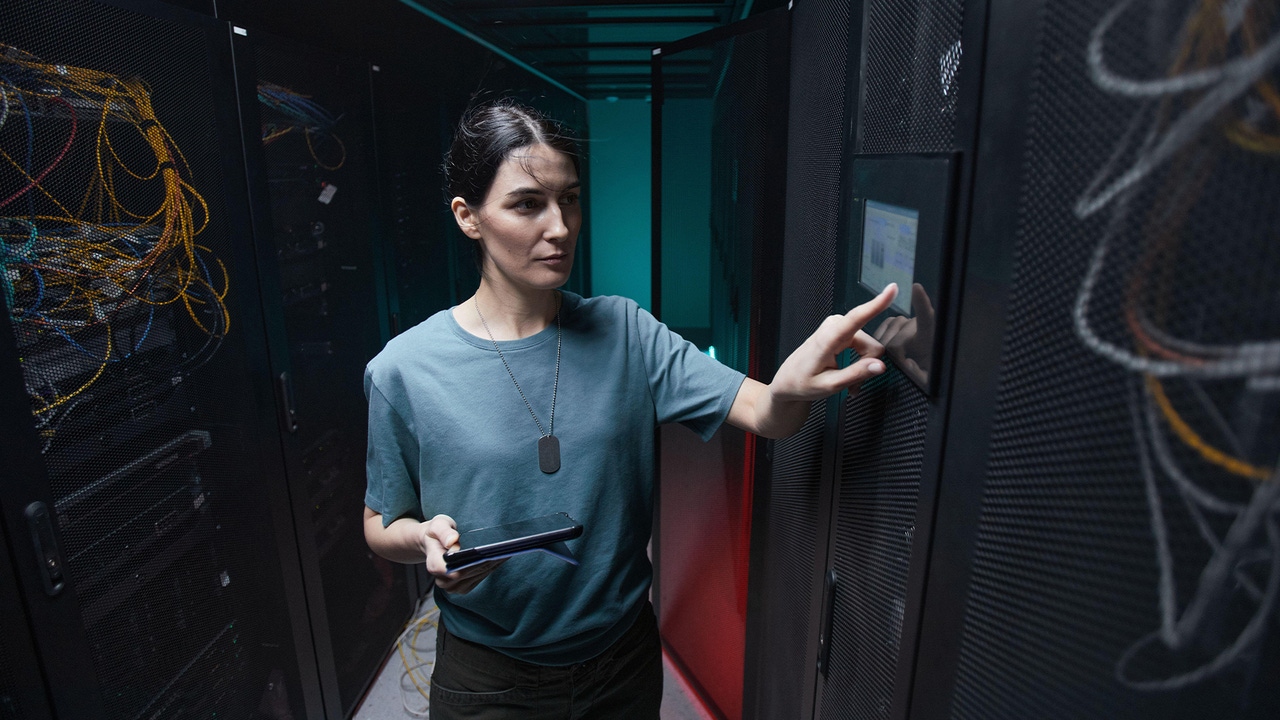7 Key Data Center Security Trends to Watch in 20257 Key Data Center Security Trends to Watch in 2025
Data center security trends are evolving fast. From hybrid cloud to chip-level controls, here’s what could redefine security in 2025.

Like preceding years, 2024 set new records for the frequency of cyber-attacks. And while data centers are rarely the main cause of breaches, data centers can be subject to security flaws, too. Mitigating them is an important step toward improving overall cyber hygiene.
As we enter a new year, what are data center operators doing to improve their security posture? Which security trends are likely to define the data center space in 2025?
To provide answers, here’s a look at data center security trends that may impact the industry in the year to come:
1. Hybrid Cloud for Streamlined Data Center Security
Most data centers today don’t operate in isolation. The workloads they host are instead part of broader IT estates that often also include resources deployed in public clouds as well.
Historically, securing both types of environments in a unified way was challenging because cloud security tools worked differently from the on-prem security solutions designed for data centers, and vice versa.
Hybrid cloud frameworks, however, are helping to change this. They offer a consistent way of enforcing access controls and monitoring for security anomalies across both public cloud environments and workloads hosted in private data centers.
Building a hybrid cloud to bring consistency to security and other operations is not a totally new idea. But as more and more organizations grapple with ever-intensifying security challenges, expect greater adoption of hybrid cloud frameworks as one way to help standardize security – and by extension, to reduce the risk of oversights that could lead to breaches.
2. Chip-Level Security Controls
Chip-level security – meaning security controls embedded within hardware – is also not a new concept. But it is assuming increased importance, and not just as a means of helping to mitigate cybersecurity risks that are difficult to detect using software-based tools.
Chip-level security features – especially those that can validate the origins of hardware and prove that tampering did not occur – are also primed to play important roles in alleviating concerns related to the embedding of malicious software into devices. As geopolitical tensions surrounding chip manufacturing intensify, being able to validate that a chip came from where it claims to have come from – and that it’s not a spyware-laden counterfeit – will grow in importance.
3. Data Center Personnel Vetting
Growing geopolitical tensions, combined with compliance laws that sometimes require IT service personnel to be citizens or residents of a specific country, may also contribute in the new year to increased efforts by data center operators to vet their personnel.
This means that, rightly or wrongly, the hiring process for data center technicians may require not just ensuring that employees possess the right technical skills, but also that their access to servers, applications, and data won’t violate compliance requirements or trigger allegations of espionage.
4. Edge Data Center Security Investments
Edge data centers can help to boost workload performance by locating applications and data closer to end-users. But they also present some unique security challenges, due especially to the difficulty of ensuring physical security for small data centers in areas that lack traditional physical security protections.
Nonetheless, as businesses face greater and greater pressure to optimize performance, demand for edge data centers is likely to grow. This will likely lead to greater investment in security solutions for edge data centers. For example, we might see new types of edge data center designs that make them especially difficult for attackers to penetrate, or creative efforts to disguise edge data centers to make them harder for threat actors to identify.
5.Multi-Layered Data Center Security
Traditionally, data center security strategies typically hinged on establishing a strong perimeter and relying on it to prevent unauthorized access to the facility. However, this approach has two main downsides: It doesn’t mitigate threats from malicious insiders, and it does nothing to contain a malicious outsider who manages to get past the perimeter.
We can expect to see greater investment in multi-layered approaches to data center security in the new year. For instance, in addition to installing physical access controls at the main data center entrance, data center operators may also restrict access to server rooms and possibly to individual server racks. This approach provides more layers of defense against outsiders, while also making it possible to establish granular security policies that reduce the access rights available to potentially malicious insiders.
6. Upgraded Security Monitoring Systems
Another way to strengthen data center security beyond perimeter-based defenses is to install monitoring systems that can identify unusual activity within a facility. These types of systems are not new. Many facilities already have security cameras in place for this purpose.
However, in 2025 and beyond, we expect to see data center operators taking advantage of more advanced surveillance technologies, like those that leverage AI to analyze audio and video data for signs of threats. In addition, data center operators may focus on deploying more surveillance tools inside their facilities, rather than primarily using them to monitor the perimeter.
Read more of the latest data center security and risk management news
7. Backup Power Systems for Security
The main reason to invest in uninterruptible power supply (UPS) units and other backup power resources is to mitigate the impact of natural disasters. But increasingly, backup power has a role to play in data center security, too.
The main reason is that disrupting power systems can be a way for malicious parties to attack facilities – and as data center expansions continue to stoke controversy, the risk of attacks is likely to rise.
Data center operators seeking to get ahead of this trend would do well to ensure that their backup power systems can protect not just against events like hurricanes, but also deliberate attacks against electricity infrastructure.
Outlook: Data Center Security in 2025In 2025, data center security will demand a multi-faceted approach, blending advanced technologies and frameworks with vigilant personnel practices. By staying ahead of these trends, operators can safeguard their facilities, meet compliance needs, and maintain trust in an increasingly complex threat landscape.
About the Author
You May Also Like









